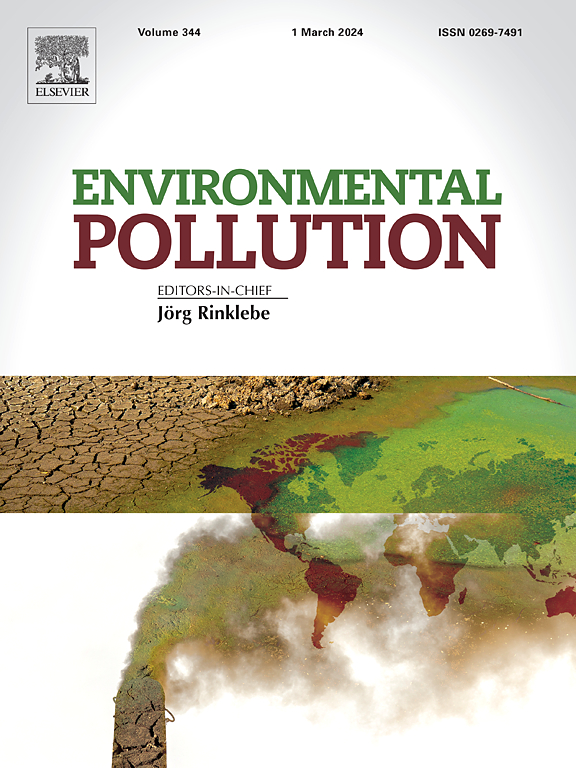Presence, partitioning, and toxicity of lithium-ion battery-derived cyclotriphosphazenes in aquatic environment
IF 7.6
2区 环境科学与生态学
Q1 ENVIRONMENTAL SCIENCES
引用次数: 0
Abstract
Cyclotriphosphazenes (CTPs) have been widely used as flame retardant electrolyte additives in the manufacturing of lithium-ion batteries (LIBs). However, their environmental occurrence, behaviors, and toxic effects have not been well explored. This study analyzed six CTPs in surface water and sediment samples collected surrounding a LIB manufacturing park. All target CTPs were detected in surface water samples, displaying the detection frequencies of 10–90 %. Phosphonitrilicchloridetrimer (HCCTP; 55 ng/L) exhibited the highest mean water concentration, followed by ethoxy(pentafluoro)cyclotriphosphazene (EPFCTP; 29 ng/L) and hexafluorocyclotriphosphazene (HFCTP; 24 ng/L). Detection frequencies of CTPs in sediment were in the range of 19–95 %. EPFCTP (mean 24 ng/g dw) and hexaphenoxycyclotriphosphazene (HPCTP; 20 ng/g dw) were the predominant CTPs in sediment. HPCTP (3.5 ± 0.61) displayed the highest mean log Koc value, which was followed by phosphonitrilicchloridetrimer (HCCTP; 3.2 ± 0.69), EPFCTP (2.8 ± 0.60), and HFCTP (2.6 ± 0.43). In addition, a high-throughput phenotypic screening assay was used to evaluate the toxic effects of CTPs on Caenorhabditis elegans. Target CTPs showed different effects on the four phenotypic parameters (i.e., length, movement, survival, and fecundity) of Caenorhabditis elegans, and HCCTP was the most toxic CTP at the exposure levels of 50–500 μM. To our awareness, this study provides the first evidence on the environmental behaviors and toxic effects of CTPs. These findings are critical for the development of strategies to mitigate the release and toxic impact of CTPs derived from the LIB manufacturing.


求助全文
约1分钟内获得全文
求助全文
来源期刊

Environmental Pollution
环境科学-环境科学
CiteScore
16.00
自引率
6.70%
发文量
2082
审稿时长
2.9 months
期刊介绍:
Environmental Pollution is an international peer-reviewed journal that publishes high-quality research papers and review articles covering all aspects of environmental pollution and its impacts on ecosystems and human health.
Subject areas include, but are not limited to:
• Sources and occurrences of pollutants that are clearly defined and measured in environmental compartments, food and food-related items, and human bodies;
• Interlinks between contaminant exposure and biological, ecological, and human health effects, including those of climate change;
• Contaminants of emerging concerns (including but not limited to antibiotic resistant microorganisms or genes, microplastics/nanoplastics, electronic wastes, light, and noise) and/or their biological, ecological, or human health effects;
• Laboratory and field studies on the remediation/mitigation of environmental pollution via new techniques and with clear links to biological, ecological, or human health effects;
• Modeling of pollution processes, patterns, or trends that is of clear environmental and/or human health interest;
• New techniques that measure and examine environmental occurrences, transport, behavior, and effects of pollutants within the environment or the laboratory, provided that they can be clearly used to address problems within regional or global environmental compartments.
 求助内容:
求助内容: 应助结果提醒方式:
应助结果提醒方式:


